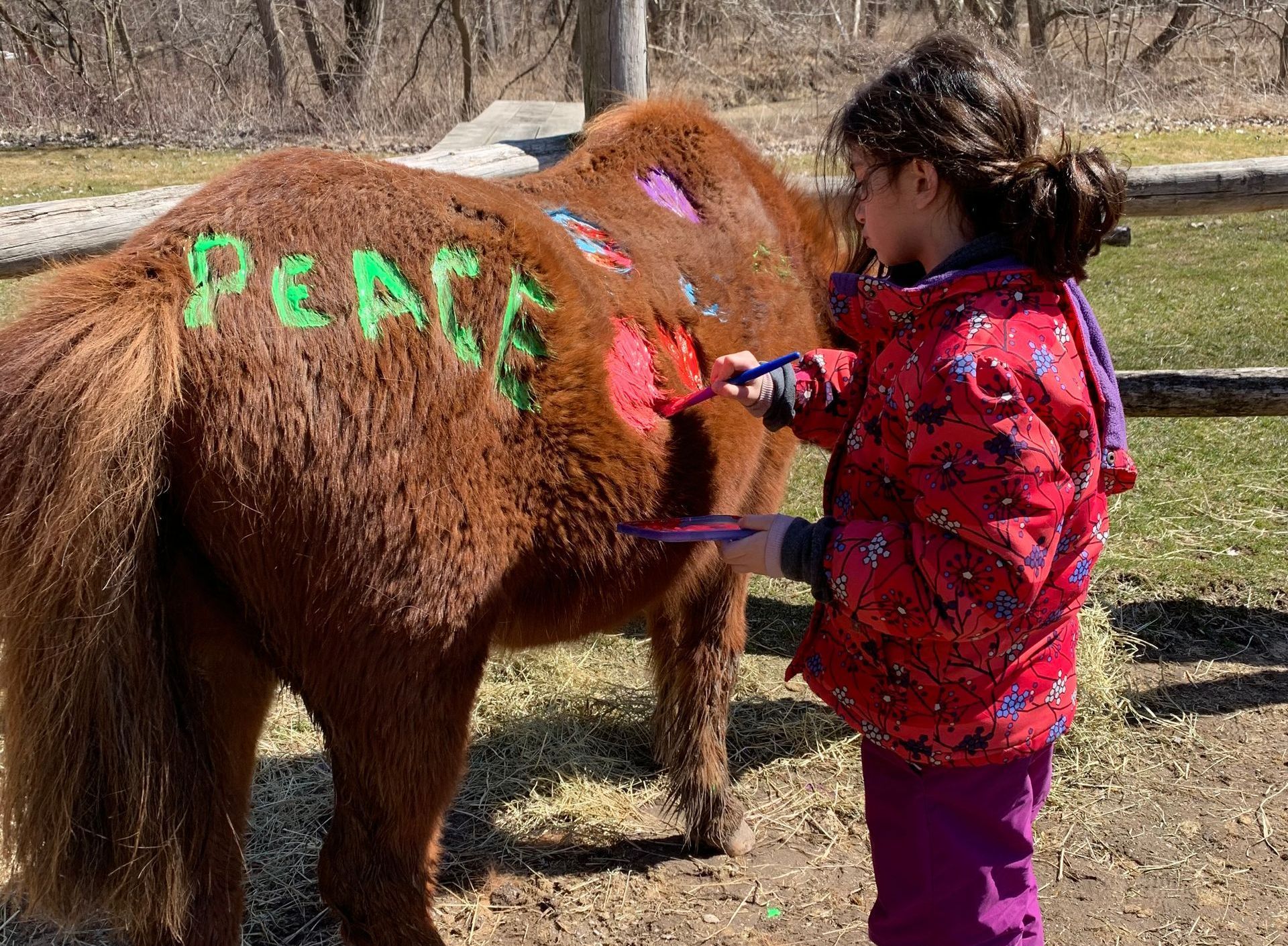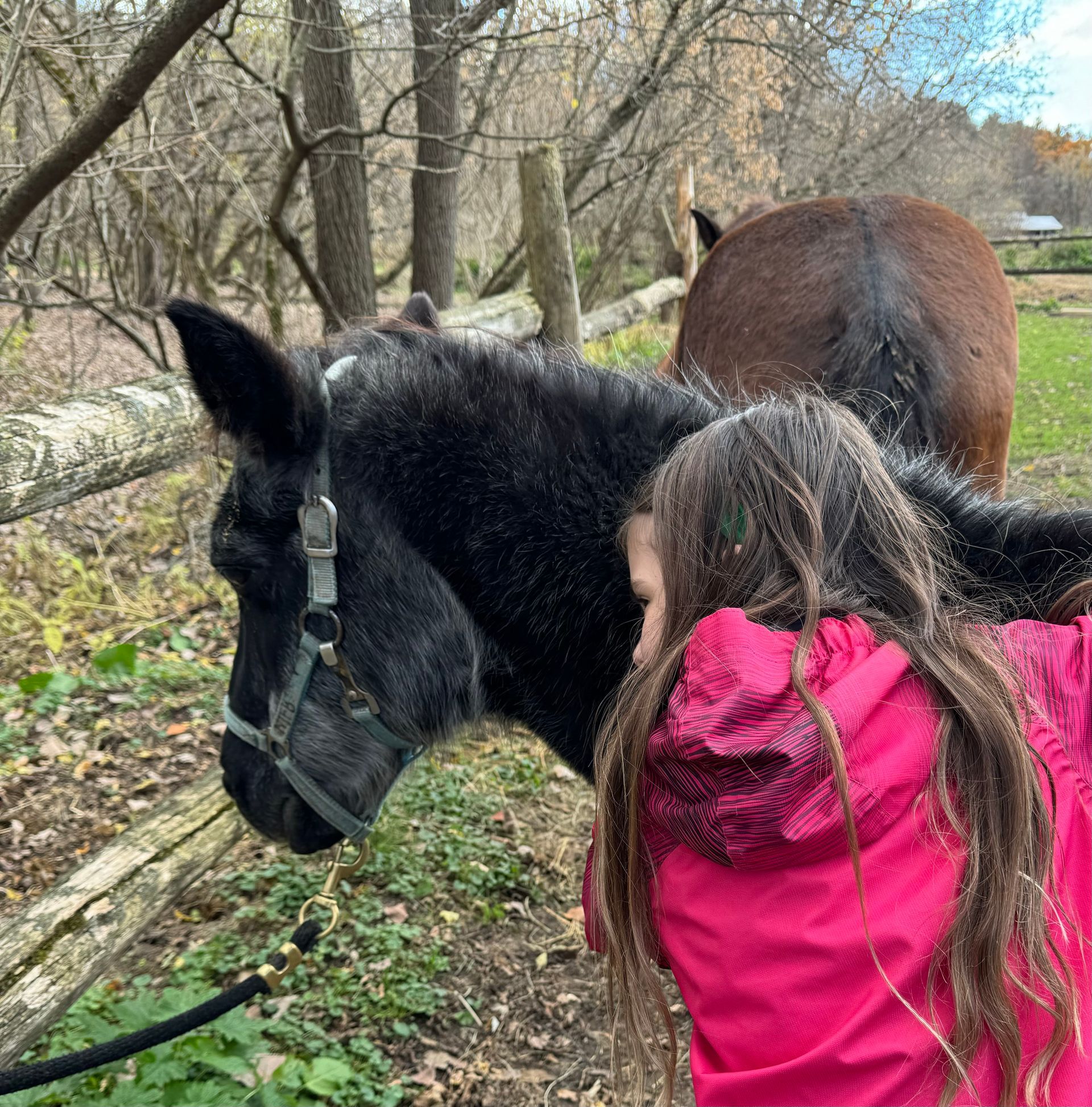The simple act of focusing on the senses can have such a powerful impact on calming the busyness and distraction of the mind and body. Spending time in this cultured focus and within an animal’s energy field can increase feelings of wellness and peace. Time and time again, I have observed kid’s squeals and rapid movements grow quieter and quieter within the peaceful energetic field of a horse and yet the changes continue to astound me. I watched the exchange with “Granny Niblet” proceed with one child leaning in and wrapping her arms around the pony’s barrel, inhaling her scent and relaxing her whole body into the warm embrace. Others followed and the pony sighed deeply in response. In just a few moments these bubbly excited Mindful Pals were transformed into calm, grounded and open-hearted individuals. We finished the lesson with them whispering remnants of any worries that were still visiting their hearts and with a final “gratitude breath” the pony pals were on their way ready to tackle the challenges of the week ahead with brains, bodies and hearts still feeling the impact of their animal encounter. Their homework was to practice this “sensory walk” with a stuffed animal or pet at home and share “their noticings” in the week following. As they waved good-bye, we smiled at one of the comments to their parents, “You should see my homework this week….I just gotta hug Ralphie!” I highly recommend this strategy for fostering effective emotional regulation skills in children.
The Best Therapist has Fur and Four Legs
Sherry-Lynne Kirschner • December 1, 2024

From the moment I witnessed a child soften when they stroked a baby flying squirrel rehabilitating at our outdoor education centre, I knew I had stumbled upon something special. In the weeks that followed I watched some summer campers let go of their worries through laughing hysterically at the crazy acrobatics of our baby goats. Then a homesick child reported to me that I didn’t need to call home because after spending time with Yeller, our dog, “she just felt different inside.” As years passed, I marveled at kids gazing peacefully at water bugs during “Pond and Puddle Ponderings” workshops and others wildly racing to finish schoolwork to gain the ever-popular reward of being part of the “Rat Pack” in my classroom. Who would ever have thought the greatest motivator for a child to learn would be the chance to interact at recess with one of the most despised animals on the planet? If you want to read about how my grade 6 students transformed our classroom into a chapel and banquet hall to host the infamous “Marshmallow and Turkey Rat wedding” stayed tuned! Over the thousands of interactions of animals and children that I have watched, I have noticed that each animal brings with them a unique quality of awareness. And if we take the time to share this with the kids in our care, valuable learning can occur.


